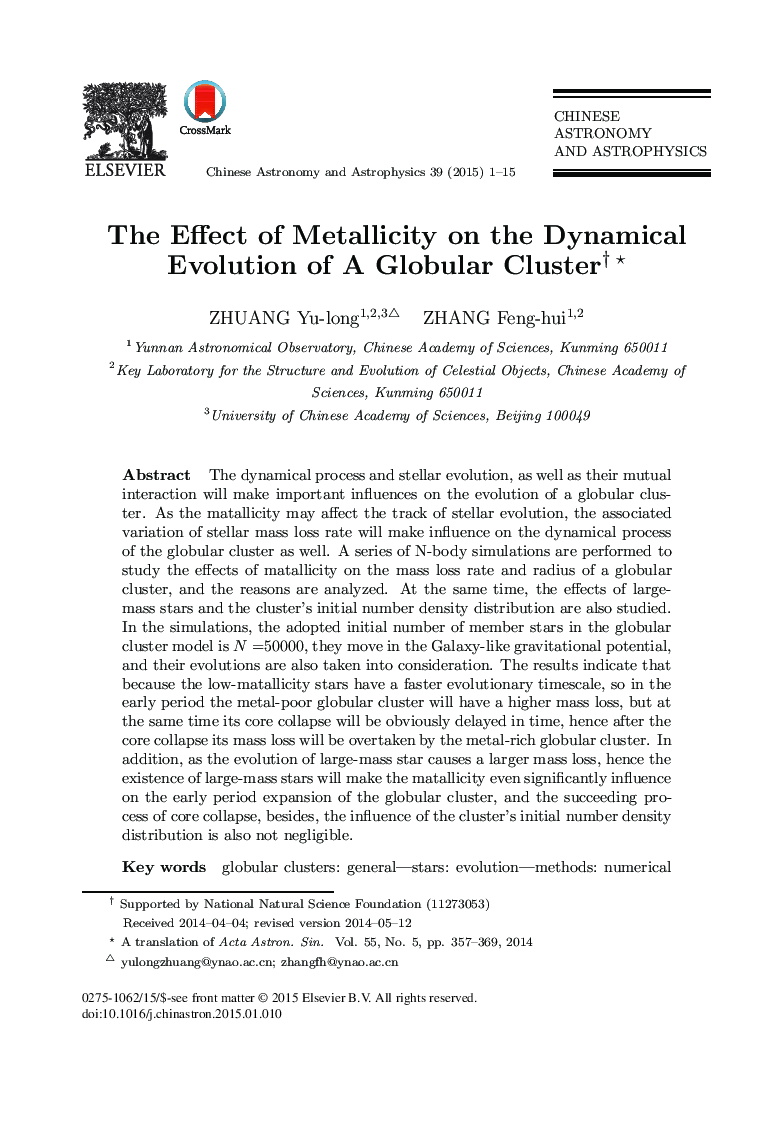| Article ID | Journal | Published Year | Pages | File Type |
|---|---|---|---|---|
| 1771731 | Chinese Astronomy and Astrophysics | 2015 | 15 Pages |
The dynamical process and stellar evolution, as well as their mutual interaction will make important influences on the evolution of a globular cluster. As the matallicity may affect the track of stellar evolution, the associated variation of stellar mass loss rate will make influence on the dynamical process of the globular cluster as well. A series of N-body simulations are performed to study the effects of matallicity on the mass loss rate and radius of a globular cluster, and the reasons are analyzed. At the same time, the effects of large-mass stars and the cluster's initial number density distribution are also studied. In the simulations, the adopted initial number of member stars in the globular cluster model is N =50000, they move in the Galaxy-like gravitational potential, and their evolutions are also taken into consideration. The results indicate that because the low-matallicity stars have a faster evolutionary timescale, so in the early period the metal-poor globular cluster will have a higher mass loss, but at the same time its core collapse will be obviously delayed in time, hence after the core collapse its mass loss will be overtaken by the metal-rich globular cluster. In addition, as the evolution of large-mass star causes a larger mass loss, hence the existence of large-mass stars will make the matallicity even significantly influence on the early period expansion of the globular cluster, and the succeeding process of core collapse, besides, the influence of the cluster's initial number density distribution is also not negligible.
